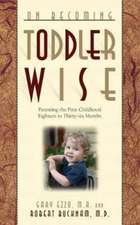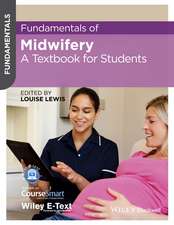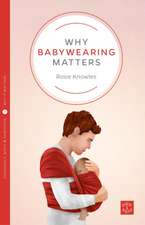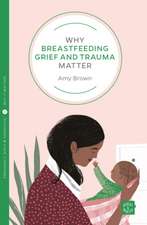Having Faith: An Ecologist's Journey to Motherhood
Autor Sandra Steingraberen Limba Engleză Paperback – 30 apr 2003 – vârsta de la 18 ani
As an ecologist, Sandra Steingraber spent her professional life observing how living things interact with their environments. Now, 38 and pregnant, she had become a habitat—for a population of one.
Having Faith is Steingraber's exploration of the intimate ecology of motherhood. Using her scientist's eye to study the biological drama of new life being knit from the molecules of air, food, and water flowing into her body, she looks at the environmental hazards that now threaten pregnant and breastfeeding women, and examines the effects these toxins can have on a child. Having Faith makes the metamorphosis of a few cells into a baby astonishingly vivid, and the dangers to human reproduction urgently real.
Having Faith is Steingraber's exploration of the intimate ecology of motherhood. Using her scientist's eye to study the biological drama of new life being knit from the molecules of air, food, and water flowing into her body, she looks at the environmental hazards that now threaten pregnant and breastfeeding women, and examines the effects these toxins can have on a child. Having Faith makes the metamorphosis of a few cells into a baby astonishingly vivid, and the dangers to human reproduction urgently real.
Preț: 142.07 lei
Nou
Puncte Express: 213
Preț estimativ în valută:
27.19€ • 29.07$ • 22.67£
27.19€ • 29.07$ • 22.67£
Carte disponibilă
Livrare economică 27 martie-10 aprilie
Preluare comenzi: 021 569.72.76
Specificații
ISBN-13: 9780425189993
ISBN-10: 0425189996
Pagini: 352
Dimensiuni: 152 x 226 x 23 mm
Greutate: 0.45 kg
Ediția:Berkley Trade P.
Editura: Berkley Publishing Group
ISBN-10: 0425189996
Pagini: 352
Dimensiuni: 152 x 226 x 23 mm
Greutate: 0.45 kg
Ediția:Berkley Trade P.
Editura: Berkley Publishing Group
Recenzii
"A cross between the quirkily thorough detail of Natalie Angier's science writing and the passionate environmental advocacy of Rachel Carson." —Publishers Weekly
"A fascinating journey into...the often toxic terrain of pregnancy to the world of child nourishment and protection." —Newsday
"A fascinating journey into...the often toxic terrain of pregnancy to the world of child nourishment and protection." —Newsday
Notă biografică
Sandra Steingraber, Ph.D., received her doctorate in biology from the University of Michigan and taught for several years at Columbia College, Chicago. Recently, she briefed U.N. delegates in Geneva on breast milk contamination. She is currently on the faculty at Cornell University.
Extras
Egg MoonIn early April the silver maples are knobby with buds, and I quit sleeping. The robins wake me first, singing their slurred triplets over and over into the gray air. Then come the cardinals with their loud and liquid phrases, which, as a world-weary teenager, I heard as insightful commentary: To wit, to wit, to wit: what cheer? what cheer? To wit: what cheer? Finally, the mourning doves begin their soft question-1 lave who? who? who? just as light fills the win- dow.
Of these three species, I consider doves the real harbingers of spring. Their flocks arrive sometime in early March. So do the robins, but some of them stay the winter as well; members of their ranks can be seen parading around front lawns on the occasional warm day in January. The corn-crunching cardinals are bona fide all-season residents, although, ecologically speaking, they arrived only recently, having extended their range into northern Illinois about a hundred years ago just in time to be appointed the official state bird. Illinois is also the winter home for a few species that, weeks from now, will migrate further north. The studious little insect-eater called the brown creeper is one. Creepers are bark-colored and mostly silent, but they can be identified easily by their work habits. They spiral methodically up the trunk of a tree, stopping to chisel spider eggs out of the crevices. When they get to the top branches, they fly down to the base of the next tree and spiral up again. It goes on like this all day-fly down, spiral up, fly down, spiral up. One has been foraging all winter in the scrim of trees that lines the alleyway. Nuthatches also pry insects out of tree bark but bring a whole different approach to the task. They race upside down while laughing weirdly to themselves. They, too, will soon be leaving for points north.
One morning, in the middle of a predawn testimony to the mirthfulness of robins, I hear fluttering right outside the bedroom window. I lift the blind, expecting to see either a creeper or a nuthatch. Instead, a trio of tiny olive-green birds stares back at me. One hops closer, blinks, then bobs his head, the top of which is painted bright pink.
"Well, who are you?"
As if in answer, the bold one bows to show me again his splendid little cap. Then more fluttering and prancing around at the ends of the maple branches. Then all are gone. I know I won't sleep again until I can identify them, so I pull back the blankets and pad out to my study. Somewhere in the stack of boxes on the far wall is my bird book. As I'm pulling boxes down to find it, I'm aware of my belly-harder now and rounder, not just thicker. The window on this side of the house is still dark enough to be a mirror, and, backlit, I can see an obviously pregnant body through the thin white cotton of my nightgown. "Who are you?" I ask for the second time before sunrise.
I make a good guess with the boxes, and find my grubby field guide to the birds wedged between two stacks of textbooks. I start flipping through the section on songbirds. It doesn't take long. There is only one olive bird with a pink spot on its head, and it is famous both for its fearlessness and for fluttering around at the ends of twigs: the ruby-crowned kinglet.
The next morning there is a new song in the mix-a thin little violin voice calling Old Sam Peabody, PeabodyO.with a plaintive fade-out at the end, as if further searching would be futile. This is a white-throated sparrow, a bird I know by heart. I peer out the window to see if I can locate it. Instead, I find the maple branches full of kinglets. Dozens of them, all tipping their caps and bouncing on the bud-swollen twigs.
There is the white-throat song again, even closer. And then again. Old Sam Peabody, PeabodyO.But I can't find the singer. I'm looking for inconspicuous black and brown feathers, a gray breast, a white throat. Nowhere
"What have you done with Mr. Peabody?" I ask accusingly of the kinglets, but if they know anything, they're not talking.
The next morning I wake at 3 a.m., absolutely convinced I hear a veery singing. I lie in the darknessyet undisturbed by robinslistening for it again. Nothing. Finally, I pad back to my study to check the bird guide. The veery, like the robin, is a thrush. Its call is officially characterized as "a descending flute-like song," but that description does not come close to capturing its otherworldliness. The first time I heard it-in a Minnesota pine forest-I froze to the spot. The veery's song is a wild, electronic, downward spiral of notes. "The song that will be playing when the alien spaceships land" would be a more apt description. According to the book, it's not possible that I just heard a veery. Its earliest known arrival date in central Illinois is April 20-two weeks from now. Also, it's a bird of deep woods, not backyards. Also, it doesn't sing in the dead of night. I must have been dreaming.
I climb back into bed but can't sleep. In the fourteenth week of pregnancy, I've entered a new phase. Torpor has given way to a stated high alertness. I'm more watchful, and my sense of hearing seems to have become more acute, too. With my new powers of perception, I try listening for the sound of songbirds migrating.
This isn't as far-fetched as it sounds. Serious bird scholars often go out on damp spring nights and listen for the faint chip chip chip of birds calling to each other as they pass by, a thousand feet overhead. Master birders can identify them to species just by the pitch and timbre of the distant flight notes. I'm nowhere near that good, but I try to imagine them out there anywaywarblers, flycatchers, thrushes, hummingbirdsfollowing the Mississippi Flyway north. Some of them are crossing the Gulf of Mexico tonight. Some are over Arkansas. Some are directly over my roof. Some are still in the mangrove swamps of the Caribbean and the mountaintops of El Salvador, waiting for a tailwind, judging the cloud cover.
A lot of mystery still surrounds the migration of songbirds. For one thing, they only travel at night. For another, most are too small to wear radio transmitters. Therefore, most of what we know about their spring and fall travels comes from radar, which can only track groups, not individuals. Before radar, researchers estimated the intensity of songbird migration by moonwatching. This was a quaint but highly skilled practice that involved counting the number of birds seen flying across the face of the full moon. It required clear skies, a telescope, and elaborate calculations to account for angles of entry, altitude, and percentage of night sky occupied by moon. Moonwatchers made fantastical claims: 200 bird silhouettes crossing the lunar window in an hour meant that three million migrants had passed by Which meant that billions of birds were on the move during particular nights of the year. There was a lot of skepticism about these extrapolations until they were confirmed by radar operators.
I must have dozed off because I suddenly become aware of robins caroling. And then Sam Peabody, Old SamO .I creep to the window ledge and let my eyes adjust to the dimness. Empty branches. No sign of the kinglets today, and no white-throated sparrows. Either I'm a truly incompetent birder or the tree itself is singing.
Jeff stirs in the bed.
"Sandra, what are you doing up? Are you worried about something?"
"Hang on a minute.
Silence. More robins.
"Sandra? Honey?"
"Shh. Just listen with me."
Old Scam Peabody..
"Did you hear that? I think we're having a son."
On the night of the full moon, I am fifteen weeks pregnant and in Boston, having flown here for an amniocentesis. This was a huge decisionwhether to have the test at all, and if so, where. Actually, the where question was easier to answer. My so-called health maintenance organization refuses to pay for non-emergency health care outside of Massachusetts. And I am living five states away for an interval of time long enough to require routine prenatal care but not long enough to win local health insurance coverage. The result is that buying a plane ticket to see an HMO-approved gynecologist in Boston is cheaper than paying Dr. Dan to do an amniocentesis in Bloomington. Since I'm fond of my Boston gynecologistwho is my age and gender and is not predisposed to exam table jokesthis situation is somewhat a relief. But it does mean that I face the procedure alone. Buying another ticket for Jeff, on top of paying Dr. Dan for monthly check-ups, is out of our budget.
The question of whether to do it at all is more complicated.
Amniotic fluid is the ocean-like substance unborn babies float in. It offers fetuses buoyancy, protection from trauma, and oxygen. Like semen, amniotic fluid is comprised of two basic elements: living cells and the liquid they're suspended in. In this case, the cells represent sloughed-off fetal skin and bladder tissue. Amniocentesis means puncturing a pregnant uterus and aspirating about 30 millilitersone shot glass fullof amniotic fluid, which is...
Of these three species, I consider doves the real harbingers of spring. Their flocks arrive sometime in early March. So do the robins, but some of them stay the winter as well; members of their ranks can be seen parading around front lawns on the occasional warm day in January. The corn-crunching cardinals are bona fide all-season residents, although, ecologically speaking, they arrived only recently, having extended their range into northern Illinois about a hundred years ago just in time to be appointed the official state bird. Illinois is also the winter home for a few species that, weeks from now, will migrate further north. The studious little insect-eater called the brown creeper is one. Creepers are bark-colored and mostly silent, but they can be identified easily by their work habits. They spiral methodically up the trunk of a tree, stopping to chisel spider eggs out of the crevices. When they get to the top branches, they fly down to the base of the next tree and spiral up again. It goes on like this all day-fly down, spiral up, fly down, spiral up. One has been foraging all winter in the scrim of trees that lines the alleyway. Nuthatches also pry insects out of tree bark but bring a whole different approach to the task. They race upside down while laughing weirdly to themselves. They, too, will soon be leaving for points north.
One morning, in the middle of a predawn testimony to the mirthfulness of robins, I hear fluttering right outside the bedroom window. I lift the blind, expecting to see either a creeper or a nuthatch. Instead, a trio of tiny olive-green birds stares back at me. One hops closer, blinks, then bobs his head, the top of which is painted bright pink.
"Well, who are you?"
As if in answer, the bold one bows to show me again his splendid little cap. Then more fluttering and prancing around at the ends of the maple branches. Then all are gone. I know I won't sleep again until I can identify them, so I pull back the blankets and pad out to my study. Somewhere in the stack of boxes on the far wall is my bird book. As I'm pulling boxes down to find it, I'm aware of my belly-harder now and rounder, not just thicker. The window on this side of the house is still dark enough to be a mirror, and, backlit, I can see an obviously pregnant body through the thin white cotton of my nightgown. "Who are you?" I ask for the second time before sunrise.
I make a good guess with the boxes, and find my grubby field guide to the birds wedged between two stacks of textbooks. I start flipping through the section on songbirds. It doesn't take long. There is only one olive bird with a pink spot on its head, and it is famous both for its fearlessness and for fluttering around at the ends of twigs: the ruby-crowned kinglet.
The next morning there is a new song in the mix-a thin little violin voice calling Old Sam Peabody, PeabodyO.with a plaintive fade-out at the end, as if further searching would be futile. This is a white-throated sparrow, a bird I know by heart. I peer out the window to see if I can locate it. Instead, I find the maple branches full of kinglets. Dozens of them, all tipping their caps and bouncing on the bud-swollen twigs.
There is the white-throat song again, even closer. And then again. Old Sam Peabody, PeabodyO.But I can't find the singer. I'm looking for inconspicuous black and brown feathers, a gray breast, a white throat. Nowhere
"What have you done with Mr. Peabody?" I ask accusingly of the kinglets, but if they know anything, they're not talking.
The next morning I wake at 3 a.m., absolutely convinced I hear a veery singing. I lie in the darknessyet undisturbed by robinslistening for it again. Nothing. Finally, I pad back to my study to check the bird guide. The veery, like the robin, is a thrush. Its call is officially characterized as "a descending flute-like song," but that description does not come close to capturing its otherworldliness. The first time I heard it-in a Minnesota pine forest-I froze to the spot. The veery's song is a wild, electronic, downward spiral of notes. "The song that will be playing when the alien spaceships land" would be a more apt description. According to the book, it's not possible that I just heard a veery. Its earliest known arrival date in central Illinois is April 20-two weeks from now. Also, it's a bird of deep woods, not backyards. Also, it doesn't sing in the dead of night. I must have been dreaming.
I climb back into bed but can't sleep. In the fourteenth week of pregnancy, I've entered a new phase. Torpor has given way to a stated high alertness. I'm more watchful, and my sense of hearing seems to have become more acute, too. With my new powers of perception, I try listening for the sound of songbirds migrating.
This isn't as far-fetched as it sounds. Serious bird scholars often go out on damp spring nights and listen for the faint chip chip chip of birds calling to each other as they pass by, a thousand feet overhead. Master birders can identify them to species just by the pitch and timbre of the distant flight notes. I'm nowhere near that good, but I try to imagine them out there anywaywarblers, flycatchers, thrushes, hummingbirdsfollowing the Mississippi Flyway north. Some of them are crossing the Gulf of Mexico tonight. Some are over Arkansas. Some are directly over my roof. Some are still in the mangrove swamps of the Caribbean and the mountaintops of El Salvador, waiting for a tailwind, judging the cloud cover.
A lot of mystery still surrounds the migration of songbirds. For one thing, they only travel at night. For another, most are too small to wear radio transmitters. Therefore, most of what we know about their spring and fall travels comes from radar, which can only track groups, not individuals. Before radar, researchers estimated the intensity of songbird migration by moonwatching. This was a quaint but highly skilled practice that involved counting the number of birds seen flying across the face of the full moon. It required clear skies, a telescope, and elaborate calculations to account for angles of entry, altitude, and percentage of night sky occupied by moon. Moonwatchers made fantastical claims: 200 bird silhouettes crossing the lunar window in an hour meant that three million migrants had passed by Which meant that billions of birds were on the move during particular nights of the year. There was a lot of skepticism about these extrapolations until they were confirmed by radar operators.
I must have dozed off because I suddenly become aware of robins caroling. And then Sam Peabody, Old SamO .I creep to the window ledge and let my eyes adjust to the dimness. Empty branches. No sign of the kinglets today, and no white-throated sparrows. Either I'm a truly incompetent birder or the tree itself is singing.
Jeff stirs in the bed.
"Sandra, what are you doing up? Are you worried about something?"
"Hang on a minute.
Silence. More robins.
"Sandra? Honey?"
"Shh. Just listen with me."
Old Scam Peabody..
"Did you hear that? I think we're having a son."
On the night of the full moon, I am fifteen weeks pregnant and in Boston, having flown here for an amniocentesis. This was a huge decisionwhether to have the test at all, and if so, where. Actually, the where question was easier to answer. My so-called health maintenance organization refuses to pay for non-emergency health care outside of Massachusetts. And I am living five states away for an interval of time long enough to require routine prenatal care but not long enough to win local health insurance coverage. The result is that buying a plane ticket to see an HMO-approved gynecologist in Boston is cheaper than paying Dr. Dan to do an amniocentesis in Bloomington. Since I'm fond of my Boston gynecologistwho is my age and gender and is not predisposed to exam table jokesthis situation is somewhat a relief. But it does mean that I face the procedure alone. Buying another ticket for Jeff, on top of paying Dr. Dan for monthly check-ups, is out of our budget.
The question of whether to do it at all is more complicated.
Amniotic fluid is the ocean-like substance unborn babies float in. It offers fetuses buoyancy, protection from trauma, and oxygen. Like semen, amniotic fluid is comprised of two basic elements: living cells and the liquid they're suspended in. In this case, the cells represent sloughed-off fetal skin and bladder tissue. Amniocentesis means puncturing a pregnant uterus and aspirating about 30 millilitersone shot glass fullof amniotic fluid, which is...
Descriere
Using her scientist's eye to study the biological drama of new life being knit from the molecules of air, food, and water flowing into her body, the author of "Living Downstream" looks at the environmental hazards that now threaten pregnant and breastfeeding women, and examines the effects these toxins can have on a child.





















